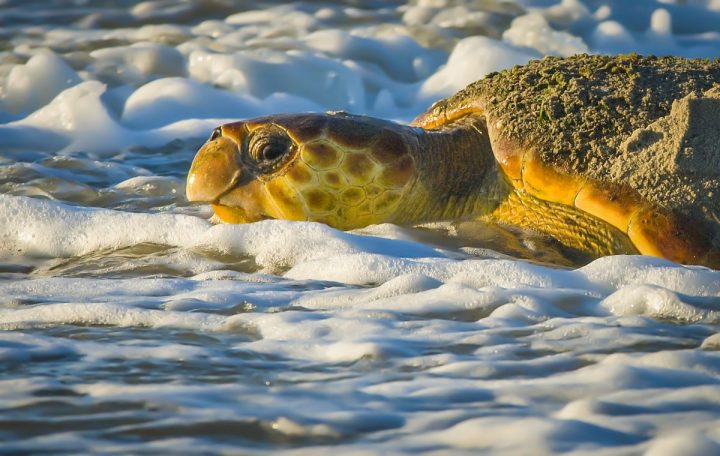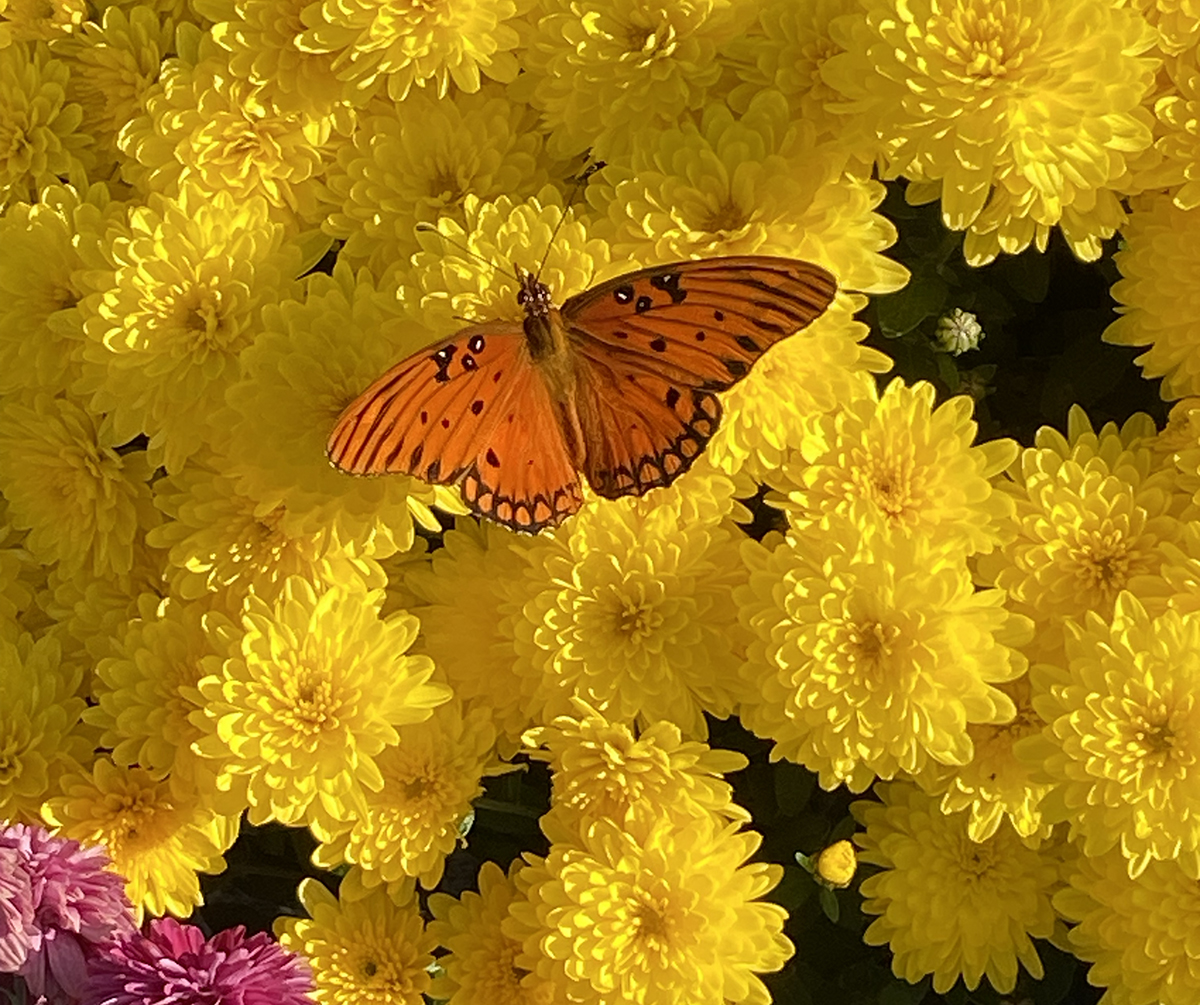
I remember the first time I watched a sea turtle dying from a plastic bag it had ingested. Its desperate attempts to breathe, how it fought for life. I remember watching it surface, awkwardly, with more than a foot of plastic hanging out of its mouth. The other turtles were nearly silent when they surfaced for air. But the sound that this loggerhead made as it labored and gasped for oxygen spun me around on the deck of my boat to be visually confronted with the heartbreaking story unfolding in the water beside me.
Schools of menhaden darkened the waters like blobs of purple masses whirling around just below the surface. An oil streak had developed some 50 yards away from me, no doubt the aftermath of the bottlenose dolphins working their way through this oily fish. And there were turtles everywhere.
Supporter Spotlight
In our minds, loggerhead sea turtles are not typically associated with finfish like menhaden. Historically, these oceanic reptiles have been more closely connected with horseshoe crabs. But these turtles are often referred to as the junkyard dogs of their family. They are opportunistic. And as shown in one study published in 2007 in the journal Copeia, the primary diet of these turtles is in a state of flux as it learns to adapt to human impacts on the items that were once listed on its menu.
Examples may be in order here. Historically, horseshoe crabs were the go-to source of food for loggerheads. And in the early 1980s this 450-million-year-old species continued to make up the bulk of contents found in the guts of these sea turtles. But as we began to destroy the horseshoe crab population for bait and the biomedical industry, by the mid-1980s, common blue crab became the prominent contents of their bellies. This was not to last however, as we all know what has been happening to blue crab populations since then. And so, by the early 2000s, croaker and menhaden were showing up more and more, according this study.
Another favorite food of loggerhead sea turtles is jellyfish. Though these guys may not be the epic jelly connoisseurs like their leatherback cousins, loggerheads rarely pass up one of these squishy ghost-like creatures when the opportunity presents itself. And as jelly populations continue to surge as a result of climate change, this is one food source that these turtles can count on.
But in today’s world, expecting wildlife to be able to count on anything is a tall order. Especially when human-made pollution begins to look a lot like food sources such as jellyfish, and as hundreds of millions of plastic bags drift tantalizingly along out coastlines. Which all brings us back to my boat and a suffocating sea turtle.
I wish I could say that this was the only time I had to witness something like this, but I cannot. A year later, while paddling my surf kayak out to a break off Pea Island National Wildlife Refuge, I watched yet another loggerhead suffering a similar fate. With what could have been either a plastic bag or balloon hanging out of its mouth, this one surfaced only once near me before diving beneath my kayak. I watched it slip into the depths, plastic streaming through the water beside it.
Supporter Spotlight
Turtles lack the ability to regurgitate, thanks in part to a papillae-lined esophagus. These papillae are like spiky little fingers, all pointing toward the belly of the beast. Once it goes in, there is no turning back. This is an evolutionary adaptation that has served these ancient reptiles quite well for more than 100 million years. That is, until now.
Then, there are all the dead sea turtles I have seen. The ones necropsied on the beach with plastic clogged inside of throats, or partially inflated with air in the guts in such a way that it would never pass through the other end. Too many sea turtles die from plastic. Welcome to the Plasticene era.
It was scenarios like the ones above that play out on a nearly daily basis along our coastline and helped drive policy back in 2010. Back then, the Outer Banks had a real problem on its hands. You see, over 7 million people visit our coast each year. The lion’s share of these rent houses on the beach, houses that need to be stocked with food. And as any local on the Outer Banks knows, come tourist season, you simply do not go grocery shopping on the weekends.
So, imagine now, 7 million people all needing groceries for a week. And all these groceries being served up in lightweight, disposable plastic bags. And all of it in one of the windiest places in the country.
If you weren’t around back then to witness the plastic bag fiasco, you might have a hard time understanding the magnitude of the problem. Imagine a biblical plague of locusts, but instead of grasshoppers descending upon Egypt, it was plastic bags on the Outer Banks. Plastic bags littered our beaches. They collected in trees after a stout southwest wind, creating what looked like some redneck Christmas tree decorated with a hundred-plus bags all bearing Food Lion’s logo. They piled up against the sides of buildings. They inundated our marshes. And many of these bags found their way into our ocean.
The main problem here was never deliberate littering. Of course, there was that too. But mostly, the problem was created from the amount of trash that one of these rental homes would accumulate throughout the course of a week. Come the end of that week, trash overflowed from nearly every can at the road. It piled up around the cans into mountains of trash sometimes. And on the Outer Banks, one thing is always certain: The wind will blow.
In his epic novel “East of Eden,” John Steinbeck wrote about the collective amnesia of Californian famers. Drought is commonplace in the Central Valley of California. It comes in roughly 20-year cycles. It devastates growers. Farmers go bankrupt. They are forced to kill off some of their crops to save water for other crops. They default on debts and lose everything. And the result is a cyclical shrinkage of the farms that survive as everyone tries to weather the hard times. But then the rains come again and the growing gets better. And after about 10 years or so, the collective amnesia sets in. The farmers forget about the drought. They expand. They borrow more money. They overextend themselves, piling on debt as they bank and speculate on next year being even better than this one. But then drought returns. The bubble bursts, and more farms go under.
So here we are, inching our way towards the 10-year mark after the ban on plastic bags along the Outer Banks was first put into place. And I have to wonder if, like the farmers depicted by John Steinbeck, a collective amnesia is beginning to set in.
The arguments we hear are that the plastic bag ban is strangling small businesses, that the law is overreach by government and that everyone should have a choice to do as they please. We hear that the government should look out for the little guy in this – never mind the fact that not so little petroleum companies have been bankrolling opposition to such bans wherever they pop up across the country.
The ironies of such arguments are endless, but at the end of the day, if the ban is repealed, it will be the small businesses that are affected by the repeal. If given a choice, the big chains will follow their orders from corporate and switch back to the cheaper plastic bags. The small businesses are the ones owned and operated by the locals, the ones who have a vested interest in the health of the Outer Banks, their home. No wonder so many of these Outer Banks businesses have already come together through the chamber of commerce to oppose this collectively. Yet, despite local businesses shouting that they want to keep the ban in place, political momentum continues to build with politicians who do not have a vested interested in the Outer Banks. It really makes you wonder: Who is the man behind the curtain pushing for this?
The Outer Banks is an outdoor recreation destination. The experience is quite unlike going to places like Virginia Beach, Myrtle Beach, or Charleston for that matter. The popularity of our beaches surged after the plastic bag ban was put into place – despite the recession – and numbers continue to grow. People want clean beaches. They need clean oceans. The world needs sea turtles. The Outer Banks lives or dies by the health and wealth of its coastal environment, which is why we must fight against the collective amnesia. We must keep the ban on plastic bags.









